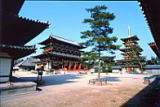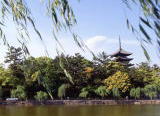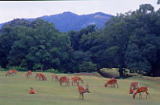 |
Introduced here are ten single-day gWorld Heritage and Historic Byway Study Toursh within a wide radius of the Kansai that visitors from Japan and abroad can select, enjoy and report to friends about after returning home. There are numerous historical and cultural resources to see and the passions of the surrounding areas that have handed them down over the ages to experience. We want to show you what makes these areas so interesting via a variety of themes like gancient adventuresh, gexquisite architectural beautyh and gtraditional industriesh. This new form of travel is being proposed by Rekishi-kaido
|
 |
 |
  |
 |


 |
In 710, the capital was moved to Nara and the Tenpyo culture flourished. The lone remnants of the Heijo-kyo Palace that served as the capital at that time is To-ji Temple.
Nara was greatly influenced by the mainland cultures of the 8th century. In the western reaches of the city is found Yakushi-ji Temple, expressive of those times. Nara Park, which equates to the outer reaches of the capital, has a collection of temples and shrines representative of other times. Nara is one place where you find a diversity of Buddhist art from differing periods.
|
 |
|
 |
 |
 |
 |
|
 |
  |
 |


 |
Nara Nishino-kyo area
EYakushiji Temple
¥¥Lunch
 Heijo-kyo Palace Site == Heijo-kyo Palace Site ==
Kofukuji Templ ==
¥¥Nara National Museum==
Kintesu JR Nara station
|
  |
Recommended itinerary
 |
|
  |
|
  |
|
  |
|
|
 |
 |
|

|











